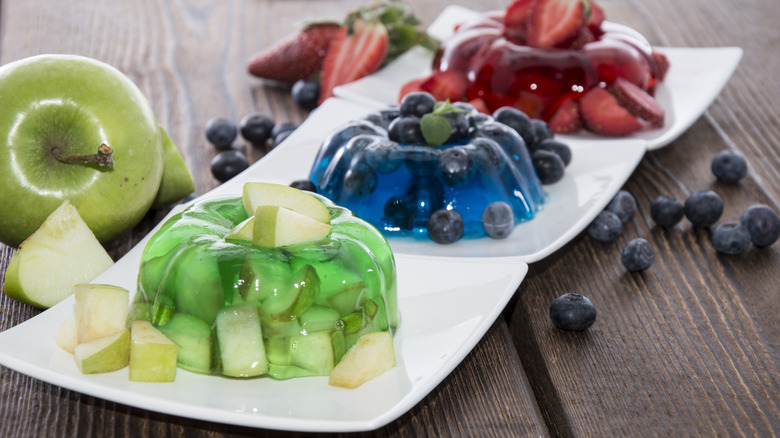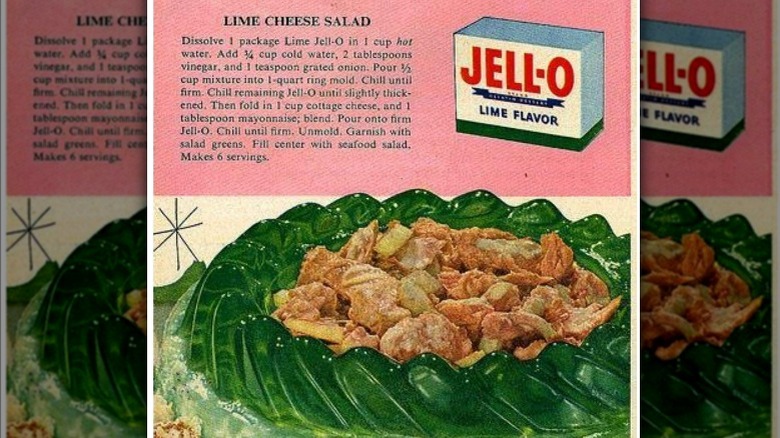Why Were 1950s Cookbooks So Focused On Jell-O?
Jell-O salads were born out of modern convenience.
Let us ask you a question: How hard is it to make Jell-O? It sure isn't rocket science. Preparing Jell-O is fast and simple and, according to Serious Eats, housewives in the 1950s thought so too. Gelatin salads had been around long before that, but it was only after the extensive rationing and scarcity of World War II that Americans began to fully embrace the convenience of Jell-O and other pre-packaged foods.
But there was a problem. Just like replacing daily cooking with fast food makes some see you as lazy, some began to view housewives as shirking their duties to their family by making these quick meals. How can a dinner be made with love if it was just dumped from a box? To circumvent being seen as a "bad" housewife while still enjoying the benefits of a quick and easy dinner, women began to experiment with Jell-O, focusing more on presentation and adding ingredients to give their meals a "hand-made" appearance.
The allure of Jell-O salad was also rooted in its symbolism, explains The Daily Meal. A housewife could prepare a Jell-O salad made of carrots, mayonnaise, and lemon-flavored gelatin using fancy, expensive molds and a brand-new, "ultra-modern" refrigerator. To prepare a Jell-O salad was to demonstrate success and wealth. However, as the 1970s approached, Serious Eats notes that Jell-O salads began to lose their appeal, as cultural and technological changes ushered in an era of "tossed salads and a fad for sun-dried tomatoes."

